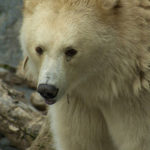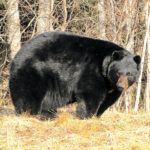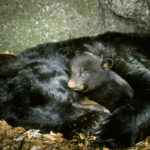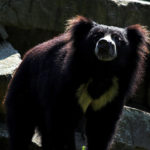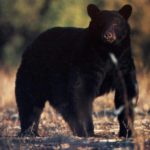Himalayan bear
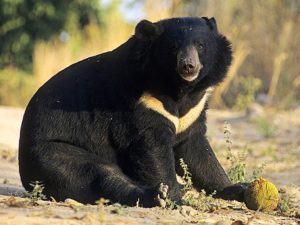 The Himalayan bear, sometimes also called the white-breasted or black Himalayan bear, is a separate species of bears that lives in the mountainous regions of Asia. The natural range of its distribution is: the Himalayas, Manchuria – the northeastern part of China, Afghanistan, Pakistan, Japan. In Russia, these bears are found in the southern part of the Khabarovsk Territory and in Primorye, where they are called the black Ussuri bear.
The Himalayan bear, sometimes also called the white-breasted or black Himalayan bear, is a separate species of bears that lives in the mountainous regions of Asia. The natural range of its distribution is: the Himalayas, Manchuria – the northeastern part of China, Afghanistan, Pakistan, Japan. In Russia, these bears are found in the southern part of the Khabarovsk Territory and in Primorye, where they are called the black Ussuri bear.
In Russia, these bears are found in the southern part of the Khabarovsk Territory and in Primorye, where they are called the black Ussuri bear. The Himalayan bear is much smaller in size than the brown bear. The size of the males is no more than 170 cm in length, height at the withers about 80 cm and weighing about 120-140 kg. Females are smaller than males. Himalayan bears, compared to brown ones, have a leaner physique, a large head with a pointed snout, and protruding ears. The front legs are more developed than the hind legs.
The fur of the Himalayan bear is shiny, usually black, although sometimes brown or even dark red is found. On the chest of the Himalayan bears, a crescent-shaped spot is white or yellowish, which is why it was called the moon bear. He has a pretty catchy look, black coloring with a white spot on his chest and protruding ears make him look not like a predator animal, but rather a good-natured animal, although this appearance is very deceiving and he is a real predator, able to fend for himself as well as attack first.
The Himalayan bear eats both animal and plant foods, with the plant prevailing in its diet. These are various nuts, fruits of trees, acorns, berries, bulbs, rhizomes, when this is not there, then leaves and shoots of branches. He is not lazy to collect ants or other insects, frogs or mollusks, he loves honey and does not disdain carrion. Sometimes it attacks animals that it can catch up with or watch over, and it can attack a person.
He perfectly climbs trees and spends almost half of the time sitting on branches where he arranges for himself something like a nest from broken branches. In the warm season, Himalayan bears stay in the mountains at an altitude of up to 4000 m, with the onset of winter they go down to the foot of the mountains. In Tibet, these bears are called “meti”, and there is an opinion that the footprints of Bigfoot “Bigfoot” are traces of the Himalayan bear.
Under natural conditions, Himalayan bears hibernate in winter. To do this, they equip their lairs among the fallen trees in hard-to-reach places, and sometimes in the hollows of large trees, carefully masking the approach. Himalayan bears live on average about 25 years.
Himalayan bears breed like all bear ones. Mating in the summer, the female usually brings 1-2 cubs, which are born very small, not more than 500 gr. weight and therefore it is rather difficult to grow a female. From an early age, she teaches kids to climb trees where they are less at risk, and takes care of them until they are 2 years old, until they become independent.
The Himalayan bears have long been an object of hunting among the inhabitants of the Himalayas. The Himalayan bear is hunted not so much because of meat and skin, but because of its bile, which, according to the local doctors, has healing properties. It is for this reason that Himalayan bears are bred in special nurseries in China, Korea, Vietnam, Laos and Burma.








